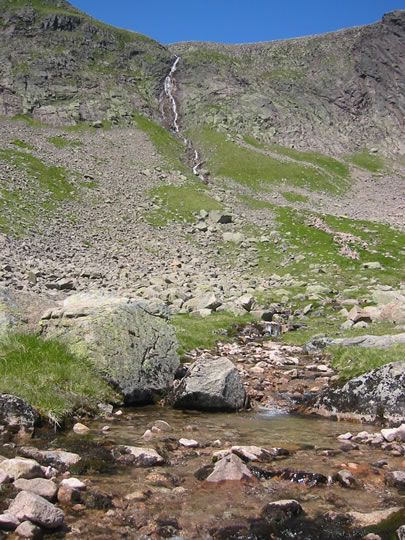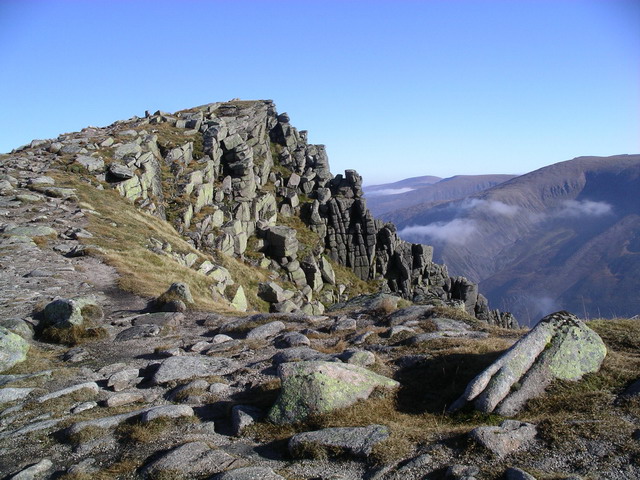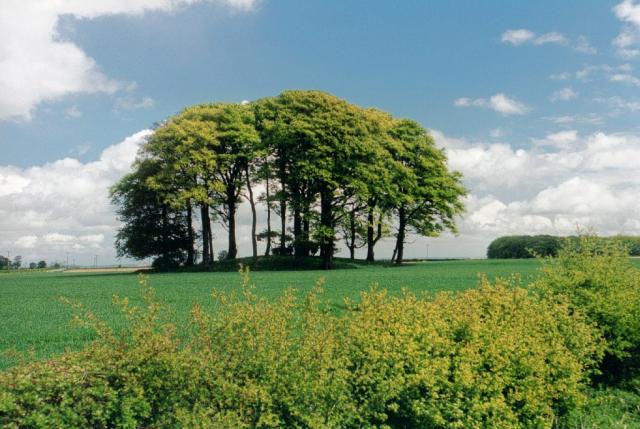|
Càrn An Fhidhleir
Carn an Fhidhleir (994 m) is a mountain in the Grampian Mountains of Scotland. It lies on the border of Inverness-shire, Perthshire and Aberdeenshire, in one of the most remote areas of Scotland between the Cairngorms and the Mounth. A domed mountain, it lies at the heart of a vast roadless area. It is possible to reach the peak from Glen Tilt or via the Linn of Dee by mountain bike. It is the triple point between the catchment area of three rivers: the River Dee, the River Spey and the River Tay The River Tay (, ; probably from the conjectured Brythonic ''Tausa'', possibly meaning 'silent one' or 'strong one' or, simply, 'flowing' David Ross, ''Scottish Place-names'', p. 209. Birlinn Ltd., Edinburgh, 2001.) is the longest river in Sc .... References Mountains and hills of Perth and Kinross Mountains and hills of Highland (council area) Marilyns of Scotland Munros {{Scotland-geo-stub ... [...More Info...] [...Related Items...] OR: [Wikipedia] [Google] [Baidu] |
List Of Munro Mountains In Scotland
This is a list of Munro mountains and Munro Tops in Scotland by height. Lists of mountains and hills in the British Isles#Munros, Munros are defined as Scottish mountains over in height, and which are on the Scottish Mountaineering Club ("SMC") official list of Munros. In addition, the SMC define Lists of mountains and hills in the British Isles#Munros, Munro Tops, as Scottish peaks above that are not considered Munros. Where the SMC lists a Munro Top, due to "insufficient separation", it will also list the "Parent Peak", a Munro, of the Munro Top. As of 6 September 2012, there were 282 Scottish Munros after the SMC confirmed that Beinn a' Chlaidheimh had been downgraded to a Corbett and as of 10 December 2020, there were 226 Scottish Munro Tops after Stob Coire na Cloiche, a Munro Top to Parent Peak Sgùrr nan Ceathramhnan, was surveyed at 912.5m and was deleted as a Munro Top and downgraded to a Corbett Top. The current SMC list totals 508 summits. While the SMC does not use ... [...More Info...] [...Related Items...] OR: [Wikipedia] [Google] [Baidu] |
Mounth
The Mounth ( ) is the broad upland in northeast Scotland between the Highland Boundary and the River Dee, at the eastern end of the Grampians. Name and etymology The name ''Mounth'' is ultimately of Pictish origin. The name is derived from ''*monɪð'', meaning "mountain" (cf. Welsh ''mynydd''). It is invariably referred to as "the Mounth" and pronounced "munth". Details The ranges to the north-west are known as the Monadh Liath and the Monadh Ruadh (called the Cairngorms in English), meaning the ''Grey Mounth'' and the ''Red Mounth''. Some sources regard the Mounth as extending as far west as Drumochter Pass ( A9), but it is now generally agreed to start at the Cairnwell Pass ( A93 – highest main road pass in Britain, Glen Shee ski centre). Here, a high undulating plateau invaded by deep glacial troughs (Glen Isla, Glen Callater, Glen Muick, Glen Clova) culminates in Glas Maol () on the main watershed, with the outlying granite Lochnagar () and its surroundi ... [...More Info...] [...Related Items...] OR: [Wikipedia] [Google] [Baidu] |
Mountains And Hills Of Highland (council Area)
A mountain is an elevated portion of the Earth's crust, generally with steep sides that show significant exposed bedrock. Although definitions vary, a mountain may differ from a plateau in having a limited summit area, and is usually higher than a hill, typically rising at least above the surrounding land. A few mountains are isolated summits, but most occur in mountain ranges. Mountains are formed through tectonic forces, erosion, or volcanism, which act on time scales of up to tens of millions of years. Once mountain building ceases, mountains are slowly leveled through the action of weathering, through slumping and other forms of mass wasting, as well as through erosion by rivers and glaciers. High elevations on mountains produce colder climates than at sea level at similar latitude. These colder climates strongly affect the ecosystems of mountains: different elevations have different plants and animals. Because of the less hospitable terrain and climate, mountains t ... [...More Info...] [...Related Items...] OR: [Wikipedia] [Google] [Baidu] |
Mountains And Hills Of Perth And Kinross
A mountain is an elevated portion of the Earth's crust, generally with steep sides that show significant exposed bedrock. Although definitions vary, a mountain may differ from a plateau in having a limited summit area, and is usually higher than a hill, typically rising at least above the surrounding land. A few mountains are isolated summits, but most occur in mountain ranges. Mountains are formed through tectonic forces, erosion, or volcanism, which act on time scales of up to tens of millions of years. Once mountain building ceases, mountains are slowly leveled through the action of weathering, through slumping and other forms of mass wasting, as well as through erosion by rivers and glaciers. High elevations on mountains produce colder climates than at sea level at similar latitude. These colder climates strongly affect the ecosystems of mountains: different elevations have different plants and animals. Because of the less hospitable terrain and climate, mountai ... [...More Info...] [...Related Items...] OR: [Wikipedia] [Google] [Baidu] |
River Tay
The River Tay (, ; probably from the conjectured Brythonic ''Tausa'', possibly meaning 'silent one' or 'strong one' or, simply, 'flowing' David Ross, ''Scottish Place-names'', p. 209. Birlinn Ltd., Edinburgh, 2001.) is the longest river in Scotland and the seventh-longest in Great Britain. The Tay originates in western Scotland on the slopes of Ben Lui (), then flows easterly across the Highlands, through Loch Dochart, Loch Iubhair and Loch Tay, then continues east through Strathtay (see Strath), in the centre of Scotland, then southeasterly through Perth, where it becomes tidal, to its mouth at the Firth of Tay, south of Dundee. It is the largest river in the United Kingdom by measured discharge. Its catchment is approximately , the Tweed's is and the Spey's is . The river has given its name to Perth's Tay Street, which runs along its western banks for . Course The Tay drains much of the lower region of the Highlands. It originates on the slopes of Ben Lui ... [...More Info...] [...Related Items...] OR: [Wikipedia] [Google] [Baidu] |
River Spey
The River Spey () is a river in the northeast of Scotland. At it is the ninth longest river in the United Kingdom and the third longest and fastest-flowing river in Scotland. It is an important location for the traditions of salmon fishing and whisky production in Scotland. Etymology The origin of the name ''Spey'' is uncertain. A possible etymological genesis for the name ''Spey'' is Early Celtic ''*skwej-'', meaning "thorn". The involvement of a Pictish form of Welsh ''ysbyddad'', meaning "hawthorn", has been suggested, but adjudged unlikely. One proposal is a derivation from a Pictish cognate of Old Gaelic ''sceïd'', "vomit" (cf. Welsh ''chwydu''), which is dubious both on phonological and semantic grounds. Ptolemy named the river on his map of 150 as ''Tuesis''. The name 'Spey' first appears in 1451. Course The Spey is long. It rises at over at Loch Spey in Corrieyairack Forest in the Scottish Highlands, south of Fort Augustus. Some miles downstream from i ... [...More Info...] [...Related Items...] OR: [Wikipedia] [Google] [Baidu] |
Drainage Basin
A drainage basin is an area of land in which all flowing surface water converges to a single point, such as a river mouth, or flows into another body of water, such as a lake or ocean. A basin is separated from adjacent basins by a perimeter, the drainage divide, made up of a succession of elevated features, such as ridges and hills. A basin may consist of smaller basins that merge at river confluences, forming a hierarchical pattern. Other terms for a drainage basin are catchment area, catchment basin, drainage area, river basin, water basin, and impluvium. In North America, they are commonly called a watershed, though in other English-speaking places, " watershed" is used only in its original sense, that of the drainage divide line. A drainage basin's boundaries are determined by watershed delineation, a common task in environmental engineering and science. In a closed drainage basin, or endorheic basin, rather than flowing to the ocean, water converges toward the ... [...More Info...] [...Related Items...] OR: [Wikipedia] [Google] [Baidu] |
River Dee, Aberdeenshire
The River Dee () is a river in Aberdeenshire, Scotland. It rises in the Cairngorms and flows through southern Aberdeenshire to reach the North Sea at Aberdeen. The area it passes through is known as Deeside, or Royal Deeside in the region between Braemar and Banchory because Queen Victoria came for a visit there in 1848 and greatly enjoyed herself. She and her husband, Prince Albert, built Balmoral Castle there which replaced an older castle. Deeside is a popular area for tourists, due to the combination of its scenery and historic royal associations. It is part of the Cairngorms National Park, and the Deeside and Lochnagar National Scenic Area. The Dee is popular with anglers and is one of the most famous salmon fishing rivers in the world. The New Statistical Account of Scotland attributed the name Dee as having been used as early as the second century AD in the work of the Alexandrian geographer Claudius Ptolemy, as ''Δηοῦα'' (=Deva), meaning 'goddess'. This ind ... [...More Info...] [...Related Items...] OR: [Wikipedia] [Google] [Baidu] |
Glen Tilt
Glen Tilt (Scottish Gaelic: Gleann Teilt) is a glen in the extreme north of Perth and Kinross, Scotland. Beginning at the confines of Aberdeenshire, it follows a South-westerly direction excepting for the last 4 miles, when it runs due south to Blair Atholl. It is watered throughout by the Tilt, which enters the Garry after a course of 14 miles, and receives on its right the Tarf, which forms some falls just above the confluence, and on the left the Fender, which has some falls also. The attempt of George Murray, 6th Duke of Atholl to close the glen to the public was successfully contested by the Scottish Rights of Way Society in 1847. The massive mountain of Beinn a' Ghlò and its three Munros Càrn nan Gabhar (1129 m), Bràigh Coire Chruinn-bhalgain (1070 m) and Càrn Liath (975) dominate the glen's eastern lower half. Perthshire is the historic county that Glen Tilt was within, Perth was the county town. Marble of good quality is occasionally quarried in the glen, and ... [...More Info...] [...Related Items...] OR: [Wikipedia] [Google] [Baidu] |
Cairngorms
The Cairngorms () are a mountain range in the eastern Scottish Highlands, Highlands of Scotland closely associated with the mountain Cairn Gorm. The Cairngorms became part of Scotland's second national parks of Scotland, national park (the Cairngorms National Park) on 1 September 2003. Although the Cairngorms give their name to, and are at the heart of, the Cairngorms National Park, they only form one part of the national park, alongside other hill ranges such as the Angus Glens and the Monadhliath, and lower areas like Strathspey, Scotland, Strathspey. The Cairngorms consists of high plateaux at about above sea level, above which domed summits (the eroded stumps of once much higher mountains) rise to around . Many of the summits have Tor (rock formation), tors, free-standing rock outcrops that stand on top of the boulder-strewn landscape. In places, the edges of the plateau form steep cliffs of granite and they are excellent for skiing, rock climbing and ice climbing. The Cairn ... [...More Info...] [...Related Items...] OR: [Wikipedia] [Google] [Baidu] |
Marilyn (hill)
This is a list of Marilyn hills and mountains in the United Kingdom, Republic of Ireland, Ireland and surrounding islands and Stack (geology), sea stacks. Lists of mountains and hills in the British Isles#Marilyns, Marilyns are defined as peaks with a topographic prominence, prominence of or more, regardless of height or any other merit (e.g. topographic isolation, as used in Lists of mountains and hills in the British Isles#Munros, Munros). Thus, Marilyns can be mountains, with a height above , or relatively small hills. there were 2,010 recorded Marilyns. Definition The Marilyn classification was created by Alan Dawson in his 1992 book ''The Relative Hills of Britain''. The name Marilyn was coined by Dawson as a punning contrast to the ''Munro'' classification of Scottish mountains above , but which has no explicit prominence threshold, being homophone, homophonous with (Marilyn) ''Marilyn Monroe, Monroe''. The list of Marilyns was extended to Ireland by Clem Clements. Ma ... [...More Info...] [...Related Items...] OR: [Wikipedia] [Google] [Baidu] |
Perthshire
Perthshire (Scottish English, locally: ; ), officially the County of Perth, is a Shires of Scotland, historic county and registration county in central Scotland. Geographically it extends from Strathmore, Angus and Perth & Kinross, Strathmore in the east, to the Pass of Drumochter in the north, Rannoch Moor and Ben Lui in the west, and Aberfoyle, Scotland, Aberfoyle in the south; it borders the counties of Inverness-shire and Aberdeenshire to the north, Angus, Scotland, Angus to the east, Fife, Kinross-shire, Clackmannanshire, Stirlingshire and Dunbartonshire to the south and Argyllshire to the west. Perthshire is known as the "big county", or "the Shire", due to its roundness and status as the fourth List of Scottish counties by area, largest historic county in Scotland. It has a wide variety of landscapes, from the rich agricultural straths in the east, to the high mountains of the southern Scottish Highlands, Highlands. History Administrative history Perthshire's origins a ... [...More Info...] [...Related Items...] OR: [Wikipedia] [Google] [Baidu] |





